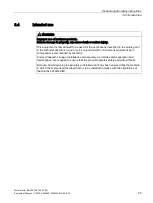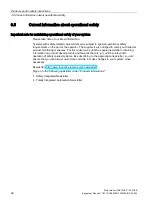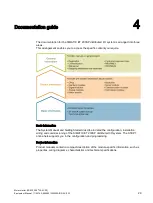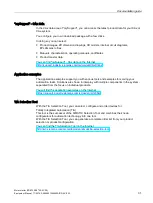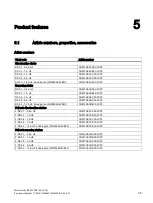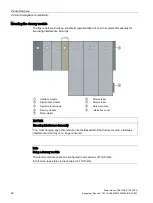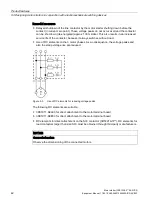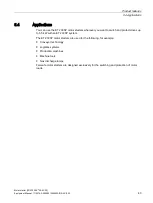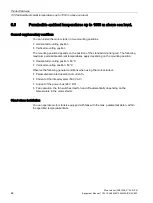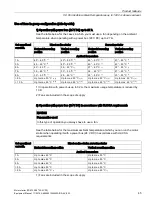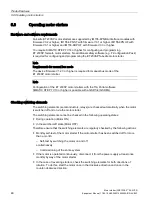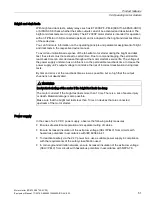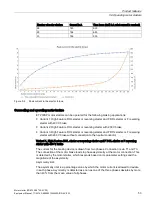
Product features
5.2 Electromagnetic compatibility
Motor starter (3RK1308‑0**00‑0CP0)
Equipment Manual, 11/2019, A5E34821005002A/RS-AC/003
39
5.2
Electromagnetic compatibility
Definition of EMC
Electromagnetic compatibility (EMC) is the ability of an electrical installation to function
satisfactorily in its electromagnetic environment without interfering with that environment.
Designing interference-free motor starters
For interference-free operation of the ET 200SP station in accordance with standard
IEC 60947-4-2, use a dummy module before the first motor starter. No dummy module is
necessary to the right of the motor starter.
Note the following mounting rules:
Use the following dummy module on the standard mounting rail between the previous
module and the ET 200SP motor starter:
BU cover 15 mm: 6ES7133-6CV15-1AM0 with BaseUnit 6ES7193-6BP00-0BA0
For operation of the ET 200SP station with an unused BaseUnit, a cover must be provided
for the open BaseUnit plug contacts (power connector, power bus connector, and backplane
bus connector).
The cover protects the plug contacts against dirt. The BU cover can be ordered as an
accessory.
Note
Use of interference suppressors with hybrid switchgear
No EMC protective wiring (e.g. RC element or varistor interference suppression module) is
ever necessary with the ET 200SP motor starter. Observe the following section in this
context Designing motor starters in conjunction with electromechanical switching devices
(Page 41).
Under normal operating conditions, the motor is always switched off in current zero due to
the specific properties of the hybrid switching technology. As result, no critical states in terms
of EMC ever arise in the surrounding environment.
If EMC interferences nevertheless arise, an RC element can be connected to the motor (see
section Designing motor starters in conjunction with electromechanical switching devices
(Page 41), figure "Use of RC elements for reducing voltage peaks").

